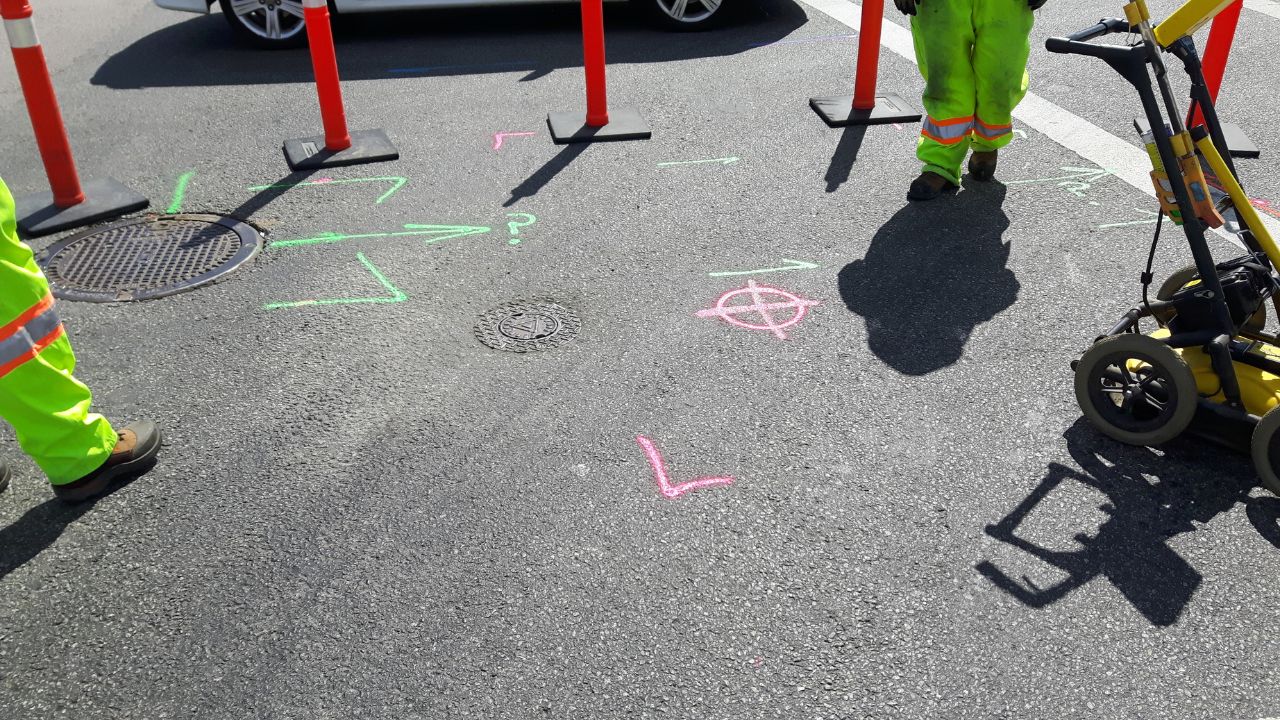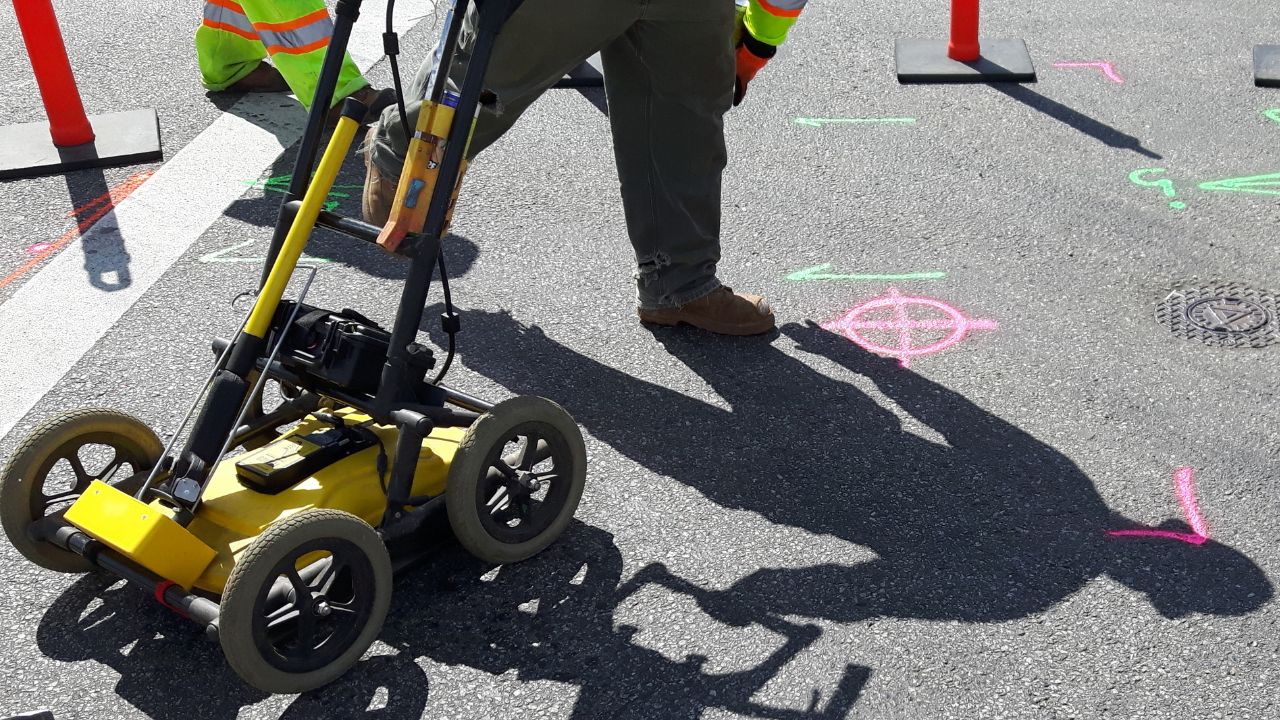Key Takeaways:
- Hitting a gas line is dangerous and expensive. It can cause explosions, fires, and costly repairs.
- Skipping underground utility locating can lead to fines. Damaging a gas line can result in hefty fines and legal trouble.
- Call 811 before digging. It’s free, easy, and required by law. Utility companies will mark gas lines for you.
- Hire a professional for utility locating services if your project is complex. They use advanced tools to find gas lines with precision.
- Hand-dig near marked gas lines. Power tools can damage lines and cause leaks.
- Watch for gas leak signs. If you smell rotten eggs, hear hissing, or see dirt blowing, stop digging and call 911.
Let’s be real for a second. When you’re planning a project, whether it’s digging a garden, building a fence, or starting a big construction job, the last thing you want is extra costs. It’s tempting to cut corners, especially when you’re on a tight budget. But here’s the thing: skipping underground utility locating is one corner you never want to cut.
Why? Because the cost of hitting a gas line isn’t just about money. It’s about safety, legal trouble, and a whole lot of stress. Let’s break it down so you can see why utility locating services are worth every penny.
What Happens If You Hit a Gas Line?
First, let’s talk about the worst-case scenario: hitting a gas line. It’s not just a little “oops” moment. It’s a big deal.
- Gas leaks are dangerous. Natural gas is highly flammable. A single spark can cause an explosion or fire, putting lives at risk.
- It’s bad for the environment. Gas leaks release methane, a greenhouse gas that’s way worse for the planet than carbon dioxide.
- It’s expensive. Repairing a damaged gas line can cost thousands of dollars. And that’s just the start.
Here’s the kicker: you could be held liable for the damage. If your digging causes a gas leak, you might have to pay for repairs, medical bills, and even legal fees.
The Financial Cost of Skipping Underground Utility Locating
Let’s talk numbers. Sure, hiring a professional for utility locating services costs money. But compare that to the cost of hitting a gas line, and it’s a no-brainer.
- Fines can be steep. In California, fines for damaging a gas line can range from a few hundred to several thousand dollars.
- Repair costs add up. Fixing a gas line isn’t cheap. You’ll need to hire professionals, and the job can take days or even weeks.
- Your project could be delayed. If you hit a gas line, your project will be put on hold until the damage is repaired. That means more time and money wasted.
Here’s the thing: The cost of hiring a professional locator is usually a fraction of what you’d pay if something goes wrong. It’s like insurance—you hope you never need it, but you’ll be glad you have it if you do.
The Safety Risks of Not Locating Gas Lines
Money is one thing, but safety is another. Hitting a gas line isn’t just expensive—it’s dangerous.
- Explosions and fires. Even a small gas leak can lead to a catastrophic explosion if it’s ignited.
- Health risks. Inhaling natural gas can cause headaches, dizziness, and nausea. In extreme cases, it can even be fatal.
- Property damage. A gas explosion can destroy your home, your neighbor’s home, and anything else in the area.
The bottom line: Skipping underground utility locating isn’t just risky—it’s irresponsible.
Legal Consequences of Damaging Gas Lines
If you think hitting a gas line is just a financial and safety issue, think again. There are legal consequences too.
- You could be fined. As mentioned earlier, fines for damaging a gas line can be hefty.
- You could face lawsuits. If your actions cause harm to others, you could be sued for damages.
- Your reputation could take a hit. If you’re a contractor, damaging a gas line could hurt your business. No one wants to hire someone who cuts corners on safety.
Pro tip: It’s not just about avoiding trouble. Following the rules and using utility locating services before digging shows that you care about safety and professionalism.
Why Utility Locating Services Are Worth It
At this point, you might be thinking, “Okay, I get it. Hitting a gas line is bad. But do I really need to hire a professional?”
The answer is yes. Here’s why:
- Professionals use advanced technology. They can find gas lines with pinpoint accuracy, even if they’re buried deep underground.
- They provide detailed reports. This can help you plan your project and avoid surprises.
- They save you time and money. By preventing accidents, they keep your project on track and within budget.
Here’s the thing: Calling 811 is a great first step, but it’s not always enough. The markings they provide are general, and they don’t always show the exact location of the lines. A professional locator can give you the precision you need.
Tips for Avoiding Gas Line Hazards
If you’re planning to dig, here are some tips to keep in mind:
- Always call 811 before you dig. It’s free, it’s easy, and it’s the law.
- Hire a professional for underground utility locating if your project is complex. They can provide the accuracy you need to stay safe.
- Hand-dig near marked lines. Power tools can easily damage a gas line, so stick to hand tools when you’re close to the markings.
- Watch for signs of a gas leak. If you smell gas, hear a hissing sound, or see dirt blowing into the air, stop digging and call 911.
How Util-Locate Can Help
At Util-Locate, we specialize in underground utility locating. Our team uses the latest technology to find gas lines, water lines, and other utilities with precision. Whether you’re a homeowner or a contractor, we’ve got you covered.
Here’s what makes us different:
- We’re fast and reliable. We know your time is valuable, so we work quickly to get you the information you need.
- We’re thorough. We don’t just mark the lines—we provide detailed reports and maps to make sure you’re fully informed.
- We’re affordable. Our services are competitively priced because we believe safety shouldn’t break the bank.
So, before you start your next project, give us a call. We’ll make sure you know exactly where those gas lines are, so you can dig with confidence.
Skipping underground utility locating might seem like a way to save time and money, but it’s a risk you can’t afford. The cost of hitting a gas line goes way beyond dollars and cents—it’s about safety, legal trouble, and peace of mind.
If you’re planning to dig, don’t take chances. Hire a professional for utility locating services, and make safety your top priority. And if you need help, Util-Locate is here to make the process easy.
Ready to get started? Browse our website to learn more about our services or to schedule an appointment. Let’s keep your project safe and on track—because when it comes to gas lines, it’s always better to be safe than sorry.




